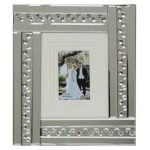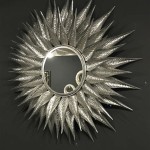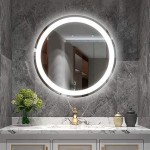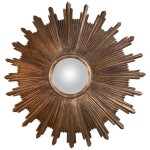How Do I Make a Two-Way Mirror?
A two-way mirror, also known as a one-way mirror, is a fascinating piece of optical technology that creates the illusion of seeing through a solid surface. It's a mainstay in detective movies and reality television, captivating audiences with its ability to reveal secrets behind a seemingly ordinary glass. But how does this intriguing phenomenon work, and can anyone recreate it at home?
The key to understanding a two-way mirror lies in its construction. It is not a single piece of glass with magical properties, but rather two layers of glass with a carefully applied coating. This coating, typically a thin layer of silver or aluminum, is the secret ingredient that makes the mirror's magic possible.
The Science of Reflection and Transmission
To comprehend the science behind a two-way mirror, it is crucial to understand the concepts of reflection and transmission. When light strikes a surface, it can be reflected back, transmitted through the surface, or absorbed by the material. The relative amounts of reflection, transmission, and absorption depend on the properties of the surface and the wavelength of light.
A typical mirror is highly reflective, meaning that most of the light that strikes its surface is reflected back. This is because the silver or aluminum coating on the back of the mirror effectively blocks the passage of light through it. On the other hand, a windowpane is mostly transparent, allowing most of the light to pass through. This transparency is due to the lack of a reflective coating on the glass.
Creating the Illusion: The Thin Coating
A two-way mirror achieves its unique properties by utilizing a very thin layer of reflective coating. This coating is thin enough that some light can still pass through it, although most of it is reflected back. The key lies in the difference in light intensity on either side of the mirror.
Imagine a two-way mirror placed between a brightly lit room and a dimly lit room. The side facing the brightly lit room will receive a high amount of light, most of which will be reflected back. This creates the illusion of a solid mirror. However, on the dimly lit side, the incoming light is much weaker. In this case, a portion of the light can pass through the thin coating, allowing observers on the dimly lit side to see through the mirror into the brighter room. The side with the higher light intensity will see a reflection, while the side with the lower light intensity will see through the mirror.
Building a Two-Way Mirror at Home
It is possible to create a two-way mirror at home, but caution must be exercised as the process involves working with potentially hazardous materials. A basic setup involves the following steps:
1. Gather Materials: You will need a piece of clear glass, a silvering solution (available online), a spray bottle, a paintbrush, two pieces of plywood, a saw, and screws. You can also find pre-made silvering kits for homemade mirrors.
2. Prepare the Glass: Clean the glass thoroughly with a solution of water and dish soap. Rinse it well and allow it to dry completely. This is crucial for a successful silvering process.
3. Apply the Silvering Solution: Follow the instructions provided with the silvering solution carefully. Usually, you'll need to spray or paint the silvering solution onto the glass in a dark room. The solution will react with the glass, leaving a thin silver coating.
4. Create the Frame: Use the plywood to create a frame that is slightly larger than the glass panel. The frame will help to support the glass and create a clean edge for the mirror.
5. Assemble the Mirror: Attach the glass to the frame using screws. Ensure that the silvering solution is facing the inside of the frame to prevent it from being damaged.
6. Test Your Mirror: To test your creation, place it between a brightly lit room and a dimly lit room. You should be able to see through the mirror from the dimly lit room while a reflection is visible from the brightly lit room.
Considerations for Home-Made Mirrors
It's important to note that homemade two-way mirrors may not produce the same perfect results as commercially manufactured versions. Factors such as the thickness of the silvering solution and the quality of the glass can impact the effectiveness of the mirror. Additionally, it is crucial to adhere to all safety precautions when handling silvering solutions. These chemicals can be hazardous, so it's essential to work in a well-ventilated area and wear appropriate protective gear.

Easy Ways To Make A One Sided Mirror With Pictures Wikihow

Making An Infinity Mirror With Two Way Acrylic Cut Plastic Sheeting

Easy Ways To Make A One Sided Mirror With Pictures Wikihow

Making An Infinity Mirror With Two Way Acrylic Cut Plastic Sheeting

How To Make A Two Way Mirror

Easy Ways To Make A One Sided Mirror With Pictures Wikihow

How To Make A Two Way Mirror

Dont Use Two Way Mirror But Mercury 80 Make A Diy Magicmirror Forum

How To Make An Infinity Mirror And Easy Optical

What Is Two Way Mirror How To Make A Purpose Of Using The Engineer S Blog








